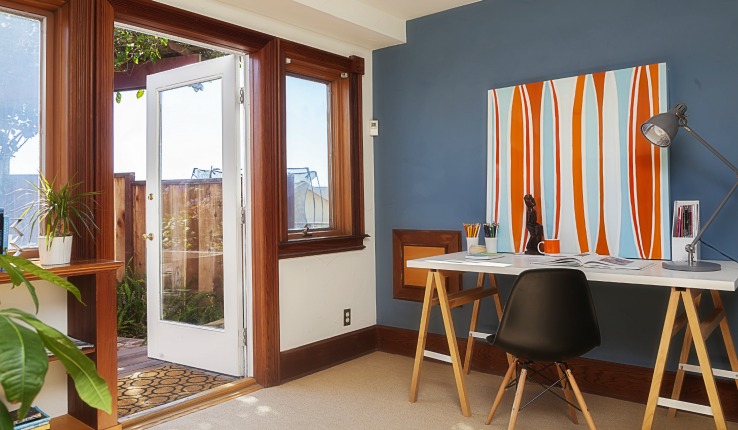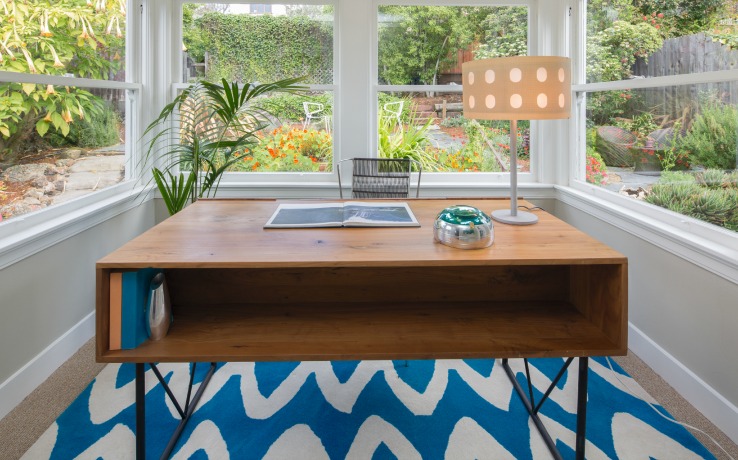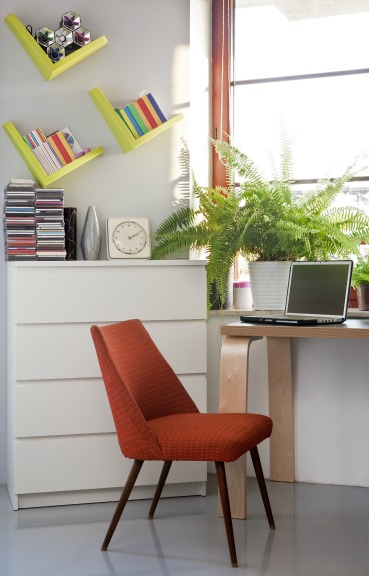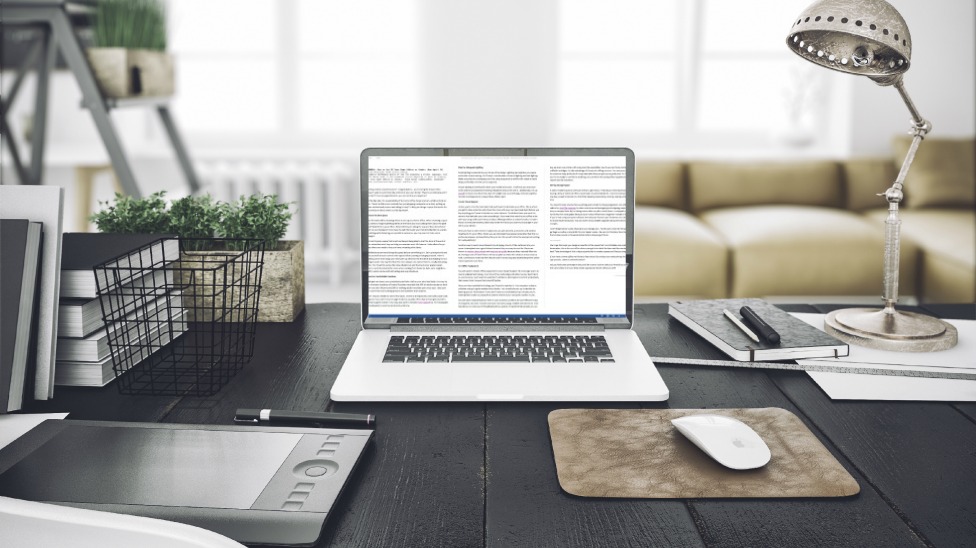Starting a home-based business? Congratulations—you’re living the dream! Who doesn’t want to work from the comfort of their own home? There’s no commute and if you don’t have any appointments, you can work in your pajamas!
On the flip-side, the responsibility of the home office design and set-up falls entirely on you. There’s a little more involved than just plopping a computer on a desk, putting up some motivational posters and calling it a day! To help you design a space that works for you and your clients check out the tips below.
Choose the Best Space
Your first task will be deciding where to set-up your home office. When choosing a space you need to imagine greeting clients at the front door and walking them down the path that’ll lead them to your office. What will they see along the way and how does that reflect on your business? If you have to walk them past your troll doll collection or a series of photographs featuring your poodle in costumes, you may want to make some changes!
It’s best to pick a space that is self-contained. Being able to shut the door at the end of your scheduled work day can help you maintain work-life balance. It also allows for privacy when you need to focus or have a meeting with clients.

I definitely recommend trying the space before committing to it. Set up temporarily and give yourself at least a week in the space before painting or hanging artwork. There’s nothing worse than using your newly set-up office for the first time and realizing it’s not going to work. You may find that the room always runs cold or there’s a really distracting echo. You’ll want to survey the noise situation as well to ensure your space is quiet. There is a lot of potential for noise when working from home (ie. kids, pets, neighbors, traffic) which can be both distracting and unprofessional.
Invest in Comfortable Furniture
Back pain can lower your productivity and take a toll on your mind and body. A survey by the American Academy of Family Physicians revealed that 90% of adults experience back pain over their lifetime and 50% of working adults have back pain every year. Back pain can come from bad working posture and repetitive strain injuries.
Don’t risk your health to save a few bucks. Invest in an ergonomic chair with proper back support. If you don’t have enough funds for a quality office chair at least get yourself a lumbar support cushion! You may also want to consider wrist support (ie. for mousepads or keyboards) to avoid carpal tunnel syndrome.
Plan for Adequate Lighting
Good lighting is essential to your home office design. Lighting can brighten your space and make it more inviting. You’ll want a combination of natural lighting and task lighting. Make sure that any workspace you’ll be using frequently is well-lit with a desk or table lamp, preferably one that can be adjusted.
Proper lighting is beneficial for both your health and mood. It will help you avoid eye-strain and the productivity-hindering headaches that come with it. Additionally, research has been very clear that a lack of sunlight can cause lethargy, reduced cognitive function and depression, so keep those blinds open!

Create Visual Appeal
Unless you’re into the minimalist look you’ll want to decorate your office. This is where you get to have some fun and infuse the room with your own personal style! Before you buy anything you’ll want to decide on a color scheme. Think about how you want the room to feel and pick your colors accordingly. If you want the mood in your office to be calm you can go with earth tones or blues. Although yellow is a cheerful color, it’s been known to stimulate anxiety which may not be the mood you want to encourage in yourself or your clients!
Once you have a color scheme in place you can pick artwork, accessories and window treatments for your office. When you are choosing these pieces remember that this is a professional space. As beautiful as they can be, this would not be the appropriate setting for nude paintings!
Another way to boost visual interest is by bringing a touch of the outdoors into your space. Houseplants are a good choice because they are easy to care for. Plants are known to reduce stress-levels and improve air quality because they naturally filter the air. Having a vase of fresh flowers when you plan to meet with clients is a nice touch as well. Just keep in mind that fresh flowers don’t last as long and replenishing them will be more expensive over time.
Get Office Equipment
You will want to include office equipment in your home office design budget. I’d encourage you to invest in updated technology. In a home office, technology will either be your best friend or worst enemy. You’ll want to avoid the frustrations, interruptions and lost productivity that comes from frequent technical difficulties.
Once you have updated technology you’ll need to maintain it. Use computer antivirus software and get regular maintenance checks. You should also set up a schedule for backing up your information. If you don’t have your work backed-up it means you’re starting from scratch or paying for a system restore if your computer crashes on you.
You will want a separate phone line for your business but there are cost-effective ways of doing this. Do some research and save money by using a reliable soft-phone (ie. internet phone) or voice over IP Broadband phone system. For administrative tasks you can buy an all-in-one printer with copy/scan/fax capabilities. See if you can find a printer with refillable cartridges, to take advantage of cheap ink refilling services. You may even want to outsource large print jobs if a copy and print shop can give you a good price. Or, if you’re not ready to commit to anything, you can look into leasing office equipment like copiers and fax machines.
Set Up Storage Space
It doesn’t take long for a well-used office to get messy. Think about what impression having a dirty or cluttered office would make on potential clients. I recommend you pick one day a week to devote to a full office cleaning (vacuuming, dusting, wiping surfaces, etc).
You need to make a home for everything and commit to staying organized. Use a filing cabinet or desk file organizer to store records as well as ingoing and outgoing paperwork. Keep a notepad close by for taking notes while on calls or with clients. A notepad is a better choice than scrap paper because your notes will be bound together instead of loose. If you’re not using computer software to track your finances you’ll want to use a ledger to record each transaction. You can store it in a portable organizer along with all of your receipts.
Don’t forget about waste disposal in your home office design plan. You’ll want a trash bin for general garbage as well as a recycle bin for your paper waste. Be sure to shred any documents that contain private or financial details before disposing of them.

We hope this helps you design a beautiful office space that’s comfortable and practical. Remember, this is the one office where you get to be both the boss and the worker bee! Take advantage of this unique opportunity to create a space you’ll enjoy using!
